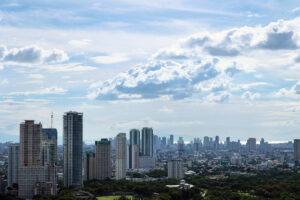PHILIPPINE ECONOMIC growth will be driven by infrastructure investments, strong employment and improved domestic demand this year, the United Nations Economic and Social Commission for Asia and the Pacific (ESCAP) said.
“Looking forward, economic growth in 2024 will continue to be supported by public investment in infrastructure and stronger employment,” Hamza Ali Malik, director at ESCAP’s macroeconomic policy and financing for development division, told BusinessWorld in an e-mail.
The unemployment rate in June fell to 3.1%, the lowest in two decades, as hiring in the construction sector surged. In the first half, the jobless rate averaged 3.9% from 4.6% a year ago.
Infrastructure spending jumped by an annual 20.6% to P611.8 billion in the first half. The Marcos administration has committed to spending 5-6% of gross domestic product (GDP) annually on infrastructure through 2028.
Mr. Malik also said the Philippine central bank’s recent rate cut could boost domestic demand.
“The recent policy rate cut should also provide some impetus to domestic demand,” he said.
The Bangko Sentral ng Pilipinas on Aug. 15 cut policy rates by 25 basis points to 6.25% from a near 17-year high of 6.5%.
High interest rates and elevated inflation put “modest pressure on domestic demand” in the second quarter, Mr. Malik said.
In the first seven months of the year, headline inflation averaged 3.7%.
The Philippine economy grew by a faster-than-expected 6.3% in the second quarter as robust state spending offset muted household consumption.
Consumption expenditure grew by 4.6% in the second quarter, slowing from 5.5% a year ago.
Mr. Malik flagged some risks to the growth outlook for the Philippines, such as a slowing global economy and rising inflation.
“Some potential risks to this outlook include a weaker-than-expected global output growth, which would affect the Philippines’ external demand and remittance inflows, thus dampening household consumption and capital investments,” he said.
He said inflation risks remain tilted to the upside as food, transport and electricity costs are still “relatively high.”
“Continued geopolitical conflict could lead to higher global oil prices,” he added.
In its April update, ESCAP upgraded its 2024 real GDP growth forecast for the Philippines to 6% from 5.7%. It projects the Philippines’ real GDP growth at 6.1% in 2025.
A country’s real GDP growth refers to the inflation-adjusted measurement of the value of goods and services produced by the economy.
ESCAP will release updates to its macroeconomic assumptions in November.
‘CAUTIOUS OPTIMISM’Meanwhile, ESCAP said the near-term economic outlook for the Asia-Pacific region points to “cautious optimism.”
In its Asia-Pacific Quarterly Economic Update last week, ESCAP said it expects steady economic performance in the second semester, depending on favorable developments in major economies.
“Internationally, if an economic ‘soft landing’ in the United States materializes and policy rate cuts follow market expectations, the combined effect of robust external demand and easing international financing conditions may further support economic growth in Asia-Pacific,” it said.
US Federal Reserve Chairman Jerome H. Powell on Friday signaled the possibility of an easing cycle beginning in September.
With China’s domestic demand still under pressure, growth in its high-tech and “green” sectors as well as fiscal and monetary interventions will likely affect other economies in the region, ESCAP said.
However, the imposition of tariffs by the European Union, US and other Asian countries on Chinese goods may cause “additional frictions” in global trade.
“A tit-for-tat trade war will take a heavy toll on regional value chains with impacts on exports, employment and workers’ earnings,” ESCAP said.
Tourism recovery in the Philippines, Thailand, Vietnam, Palau, and Bhutan is also crucial in boosting employment, it said.
However, slow economic growth in visiting countries, high costs of living, volatile oil prices, and lasting impacts of the coronavirus pandemic continue to weigh on the sector. — Beatriz Marie D. Cruz
